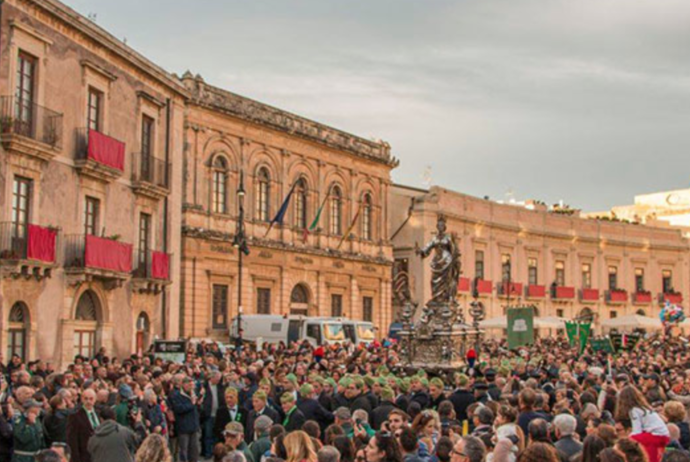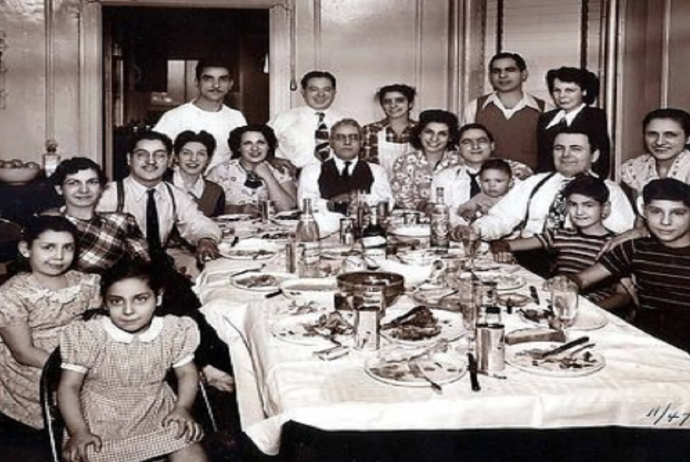Throughout the country, Italians celebrate La Festa della Santa Lucia (The Feast of Saint Lucy) annually on December 13. While Santa Lucia is most popular in Scandinavia, she was born, lived, and died a martyr in Sicily. Therefore, special devotions for her take place up and down the peninsula, specifically in the north, but also in her home region of Sicily.
Patron Saint of the Blind
Lucia was persecuted for her faith around 300 C.E., making her one of the earliest recorded Christian martyrs. Various legends narrate that she would wear a candle-lit wreath as she carried food and aid to Christians hiding in catacombs. According to the traditional story, the saintly virgin refused to marry a powerful pagan man, who fell in love with her legendary eyes. Raging from rejection, he sent soldiers to blind her, but her eyes were miraculously restored. In another version, she plucked them out herself and sent them to her suitor on a platter. Roman authorities then ordered Lucia to work in a brothel, but she refused to go. As not even a fire set under her feet could get her to budge, one of her persecutors ultimately killed her by stabbing her in the throat with a sword.
She has been venerated as the patron saint of the blind and is frequently shown holding her eyes on a golden plate. Perhaps not coincidentally, Lucia’s name derived from the Latin lux or lucis for light (luce in Italian). Her feast day once coincided with the Winter Solstice, the shortest and darkest day of the year before calendar reforms, and has accordingly become a festival of light. As it falls within the Advent season just 12 days before Christmas, Saint Lucy’s Day also points to the arrival of Christ, the light of the world.
Famine in Siracusa, Sicilia
Lucia is also the patron saint of her hometown, Syracuse, Sicily. In fact, she gained greater fame here when the great Sicilian famine of 1582 ended on her feast day, thanks to the ship loaded with wheat that entered the harbor. Rather than processing the wheat into flour, the starving people simply boiled and ate it. Now, Sicilians honor her memory by abstaining from anything that is made of wheat flour on December 13. Traditionally, they eat whole grains, which usually take the form of cuccia—a dessert of boiled wheat berries sweetened with ricotta and honey.
Today’s Celebrations
Typically on this day, Italians gather together, burn candles and torches, and enjoy an abundance of food and drink. Of course this is a different year and the pandemic has canceled all initiatives, but we want to remember them so that we are all ready to celebrate next year.
However, traditional celebrations of Santa Lucia usually vary according to region.
In northern Italy, specifically in Trentino-Alto Adige, Lombardy, Veneto, Friuli-Venezia Giulia, and Emilia-Romagna, Santa Lucia is celebrated similarly to the Saint Nicholas tradition. But instead of traveling on a sleigh, she rides on her donkey and visits homes on the eve of her feast day, baring gifts for the good children. And rather than milk and cookies, families leave out coffee and cake—sometimes biscuits and oranges too—for the saint and water and hay for the donkey. However, the children cannot watch her visit, or she will throw ashes in their eyes, temporarily blinding them.
In Milan in particular, you will see St. Lucy represented in the Cathedral, as she is considered the protector of the sculptors of the Veneranda Fabbrica del Duomo, who processed marble every day, continuously at risk of being hit in the eyes by splinters or blinded by the dust. Of the many important events that take place in her honor in the area, every year the Chiesa di Santa Maria Annunciata in Camposanto has a Mass to thank her and to distribute "St. Lucy’s bread."
In southern Italy, Santa Lucia is honored with more traditional religious parades and feasts. The most important celebration takes place in Siracusa, of course. Festivities begin the night before when they move her silver statue from its chapel to the high altar of her candle-lit cathedral. The next morning, a procession of 60 men with green berets carry her silver statue throughout the entire city, making stops at the most important cathedrals and the Ionian Sea.
































